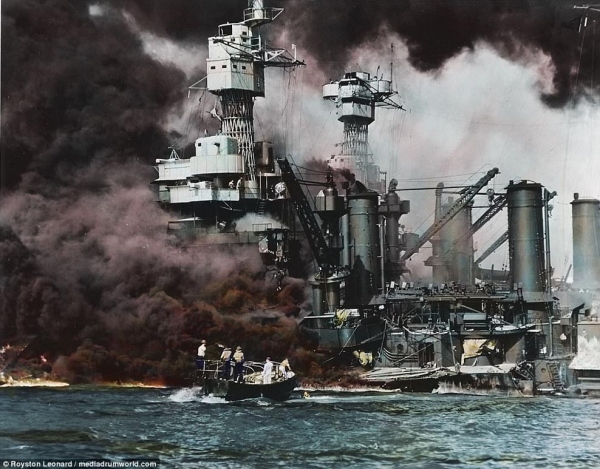In August, 1941, the senior commanders of Pearl Harbor sat down and correctly forecast how the Japanese attack on the Hawaiian naval base would take place. They imagined that
“the Japs would approach via the ‘vacant sea’ where no trade routes existed (which they did); that they would use a force of six carriers (they did); that they would be 680 miles north the night before (they were 800 miles north); that they would steam from this position at 27 knots (it was 26 knots); and that they would launch their planes 350 miles north of Pearl Harbor (it was 200 miles north).”
General George Marshall explained to these officers that he believed it far more probable that the Philippines would suffer the first attack by the Japanese and that their efforts would be best spent considering that scenario.
During the Congressional hearings, General Marshall publicly acknowledged that the he was responsible for the military’s poor defenses – click here to read about it…
Four years after the Pearl Harbor attack, a Japanese newspaper editorial expressed deep regret for Japan’s aggressiveness in the Second World War, click here to read about it…
Additional articles about the Pearl Harbor attack can be found here…
KEY WORDS: Major General Frederick L Martin Peal Harbor Defense Plans Ignored,Vice Admiral Bellinger Peal Harbor Defense Plans Ignored,Vice AdmiralN L Bellinger Peal Harbor Air Defense Commander,Major General Frederick L Martin Peal Harbor Air Force commander








































